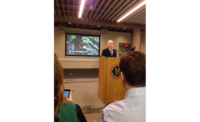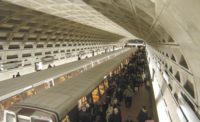DC Metrorail's New GM Targets Fixes
Washington, D.C.’s Metrorail was once a model for public transit in the U.S. On the eve of its 40th birthday, the system is rife with safety, operational and management problems. Now, its recently appointed general manager is determined to do something about them.
In his first major public policy statement since taking the reins of the Washington Metropolitan Area Transit Authority last November, Paul Wiedefeld said the agency must “confront some hard truths” about issues that have eroded the system’s reliability and efficiency. Topping the list is the absence of a fully integrated safety culture, evidenced by a series of recent derailments, and a January 2015 tunnel-smoke incident that left one passenger dead and injured several others.
Capital projects also lack proper management, Wiedefeld added, citing significant underspending for more than a decade. Meanwhile, mechanical and infrastructure failures force nearly daily delays across the system.
Wiedefeld, who previously served as CEO of Baltimore/Washington International Thurgood Marshall Airport and headed the Maryland Transit Administration, identified 28 steps targeting the most immediate issues, including hiring a chief safety officer, accelerating delivery of new railcars, improving financial management systems and exploring P3 opportunities.
Other Metrorail challenges may not be so easily solved. While the new Silver Line extension to Washington Dulles International Airport is being constructed by another agency, integration of the 11-mile first phase into Metrorail operations has proven problematic. Limited track capacity and altered headway times have resulted in fewer, more crowded trains on other lines.
Some of Metrorail’s worst throughput problems occur at a tunnel in Rosslyn, Va., where three lines converge to cross beneath the Potomac River into D.C. A long-planned second tunnel has yet to receive any funding.




